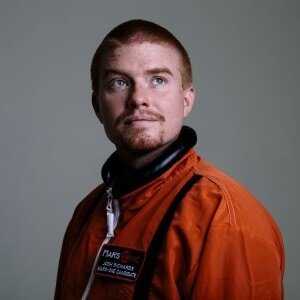Last updated October 17, 2017 at 4:20 pm
There comes a point for each of us during a week long conference where you start to really question just how much you can squeeze in without collapsing. I think of of us are starting to get just a touch of conference fatigue. The endless series of incredible announcements have been completely stunning, but at the same time to try to process it all is incredibly daunting!
That said the enthusiasm was still very clear at the 2nd series of student competition papers first thing this morning. One of the stand out papers was hearing from Matthew Richardson, an Australian PhD researcher at the Japanese space agency JAXA looking at how reducing the temperature the rocket engines operate at can significantly extend their lifespans. With SpaceX now consistently reusing launched rocket boosters, understanding how to reduce the amount of damage each launch does to the engine bells means that instead of a booster being used for up to a dozen launches as Elon Musk has spoken about for his Falcon 9 boosters, the kind of research that Matthew is doing at JAXA means that future boosters could be reliably reused for hundreds launches. The future of rocket technology is especially bright, with talented researchers like Matthew building on the breakthroughs being made to develop the rockets that will be cheaper, safer and more reliable than ever before.
The International Astronautical Congress isn’t just about all about making a better rocket though – communicating science and encouraging a passion for space exploration is as critical to the global space industry as physically launching things into space is. With that in mind this year marks the introduction of a brand new “Hands-on Space Education and Outreach” session to the education and outreach stream. While the session started with some “space yoga” with Monica Ebert, and Jeong-Won Lee shared Korea’s space education success through the “Can-Sat” program, things finished with a bang when Lisa Stojanovski demonstrated some of the incredible and engaging space-related outreach activities run through the “Shell Science Circus”. While she managed not to singe anything setting her hands on fire to demonstrate the heat capacity of water, the audience were a little less willing to volunteer after a demonstration of vacuum power went awry and a postcard holding a glass of water slipped, soaking a young scientist! After a good laugh and a towel we had a group demonstration of static electricity with 6 people from the audience managing to transmit a small electric shock between them.
After soakings and shocks the rest of the audience were feeling pretty shy when Lisa asked for a final volunteer to help with a rocket launch, so somehow I got roped into it! Standing in the middle of the audience holding a tethered pole wearing welding gloves and safety glasses, I had to try to “catch” a bottle water rocket launch fired from Lisa’s bike pump along a length of washing line! I can’t say I caught the rocket, but I can certainly say it was one of the most entertaining conference sessions I’ve ever been part of – here’s hoping next year’s hand-on session is even half as much fun!
Our researcher Trent flexes his science muscles for @LisaStoj @questacon finale demo! #IAC2017 pic.twitter.com/3b48kuuB5s
— Fireballs in the Sky (@FireballsSky) September 27, 2017
Follow all the IAC 2017 coverage, including news and articles in the lead up to this astronautical event, and daily live videos during the Congress at australiascience.tv/iac-2017.
Follow us on Facebook, Twitter and Instagram to get all the latest science.

































































































































































































































































